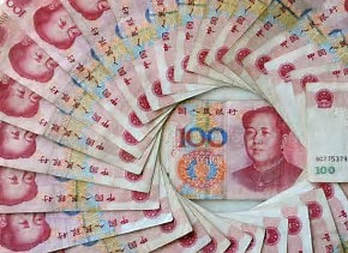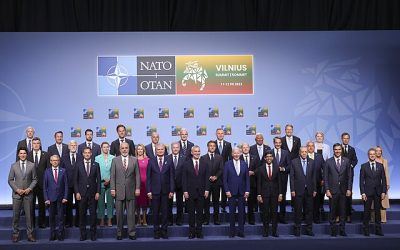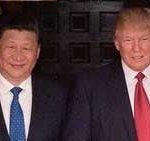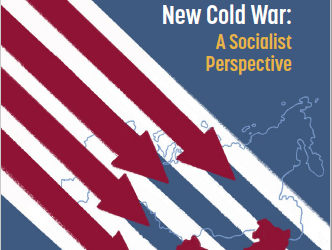The dollar’s domination of the international monetary system, and the ‘exorbitant privilege’ it gives the US, to use the phrase of leading US monetary economist Barry Eichengreen, is clear. But is it possible to break the dollar’s dominance?
As China is the world’s leading rising economy, with an economy larger than the US in purchasing power parity (PPP) terms, and on course to overtake US GDP at current exchange rates in the coming decade, some people hope or believe the RMB may be able to displace the dollar’s dominance in the near term. This is what is sometimes hoped for in the term the ‘internationalisation of the RMB’. Others believe that the IMF’s Special Drawing Rights (SDRs) may displace the dollar’s dominance – perhaps in tandem with the RMB and Euro?
This article explains, from the point of view of fundamental economics and economic theory why this is not possible, and why the dollar will continue to dominate the international monetary system for a prolonged period – measured in decades. This does not mean that the international use of the RMB will not increase – it will, but this will remain small compared to the dollar. It will take several decades for the RMB to displace the dollar. SDR’s will play a far smaller role than the RMB.
As China is the world’s leading rising economy, with an economy larger than the US in purchasing power parity (PPP) terms, and on course to overtake US GDP at current exchange rates in the coming decade, some people hope or believe the RMB may be able to displace the dollar’s dominance in the near term. This is what is sometimes hoped for in the term the ‘internationalisation of the RMB’. Others believe that the IMF’s Special Drawing Rights (SDRs) may displace the dollar’s dominance – perhaps in tandem with the RMB and Euro?
This article explains, from the point of view of fundamental economics and economic theory why this is not possible, and why the dollar will continue to dominate the international monetary system for a prolonged period – measured in decades. This does not mean that the international use of the RMB will not increase – it will, but this will remain small compared to the dollar. It will take several decades for the RMB to displace the dollar. SDR’s will play a far smaller role than the RMB.
This does not mean that the use of the RMB in foreign trade should not be encouraged – it should be. Use of the RMB in international transactions can also be valuable in relations between countries, or groups of countries, to break US unilateral sanctions. But there is no possibility for the RMB to displace the dollar’s dominance for a prolonged period.
This is not a ‘desirable’ outcome, as is analysed below, but it is the only realistic one. Attempts to artificially inflate the international role of the RMB in any attempt to challenge the dollar, which would require liberalisation of China’s capital account, would be highly damaging as they would be both an economic adventure, incapable of achieving success, and allow capital to flow out of China destabilising its domestic economy. A gradual step by step approach to internationalisation of the RMB, with a very long time frame for achieving this, is the only viable and correct policy.
For the reasons this is the only realistic path, and for analysis of the fundamental features of the international monetary system which determine it, please read following article.
* * *
RMB internationalization is one of the most important questions for China’s economy. But it is also one where developments will go more slowly than media speculation imagines, due to the real factors affecting it.
An exaggerated picture on RMB internationalization is presented when percentage growth figures are used as these are calculated starting from very low levels. For example, the proportion of RMB payments carried out in the United States in April 2014 rose by 100 percent compared to a year earlier, which sounds spectacular – except that the rise was only to 0.04 percent of all worldwide currency transactions. In April 2014 the RMB accounted for only 1.4 percent of international payments.
Taking China’s strongest area internationally, by the end of 2013, 8.7 percent of world trade was RMB denominated, but around 80 percent of this was with Hong Kong. The dollar’s global share was 81 percent. The European Central Bank states that by the second quarter of 2013 only 0.3 percent of international bonds were in RMB. By the beginning of 2014, 60 percent of foreign exchange reserves were in dollars, 25 percent in Euros and only 0.01 percent in RMB.
These numbers are so low that there is room for huge percentage increases, yielding profitable business for individual financial institutions, without the RMB’s peripheral position in global finance altering.
Beyond these extremely low numbers, there are fundamental structural reasons why the RMB will not play a central role in global finance in any near time frame, and the dollar will remain dominant for a prolonged period.
Only two global currency systems have existed in the last 300 years. In 1717 the pound was linked to gold, establishing the international gold standard. This system lasted for 200 years – its collapse can be taken as either 1914, when it was temporarily suspended, or 1931 when the pound formally broke its previous parity with gold. The second global system, a de facto dollar standard, has lasted for almost seven decades since 1945. The interregnum between the two, 1931-45, accompanied the most catastrophic crisis in world economic history.
There is therefore a prolonged lag between the economic rise and fall of states and changes in international monetary systems. The UK fell behind the United States as the world’s largest market economy in the 1870s, but Britain maintained global monetary dominance for half a century. There was a seventy year lag between the United States, becoming the world’s largest economy and the dollar becoming the dominant international currency.
This extreme “rigidity” in international payments structures flows from the fundamental character of a market system. An efficient market can only operate if there is a single measure of prices – if there were different prices in different parts of the market uncontrollable arbitrage and/or fragmentation would destroy it. Gold provided a single measure for international markets, then the dollar did. The only period in which there was no single price measure, 1931-45, could only exist because the world economy was disastrously fragmented – and the accompanying results, the Great Depression and World War II, were catastrophic.
A necessary consequence of the existence of only a single price standard is that, to allow its functioning, substantial international holdings of whatever is the price unit must exist – large gold holdings under the gold standard, and large dollar holdings under the dollar standard. The scale of these reserves then becomes a powerful factor maintaining the dominance of that monetary unit.
This is why periodic predictions, ignoring economic fundamentals, that the dollar is about to be replaced or challenged by some other unit invariably turn out to be false. For example, the prediction was made that the Euro could replace the dollar. The reality, as the statistics show, is that the dollar continues to dominate international payments.
What are the consequences of these fundamental economic realities for RMB internationalization? The RMB can certainly become a minor international currency, but it cannot challenge the dollar’s dominance. That could only occur if the “dollar system,” as a global price unit, were replaced by an “RMB system” – which would require a revolution in the global economy, and is unrealistic in the coming period.
This, in turn, has major consequences for any liberalization of China’s capital account. As it is impossible, for a prolonged period, to replace the dollar as the dominant international currency, and therefore the dollar remains the dominant unit people wish to hold, the inevitable result of global capital account liberalization since the 1970s was not a multilateral flow between currencies but merely a net inflow into dollars. This strengthened the dollar’s international position, allowing the U.S. to finance its huge balance of payments deficits.
Countries which ignored these economic fundamentals, and mistakenly believed international capital account liberalization was a multilateral system, rather than one to allow funds to flow into dollars, were hit by economic crisis. For example, South East Asian countries, which had mistakenly imagined that they could benefit from capital account liberalization, were taught a devastating lesson in the crisis of 1997 that the only large scale net flows which the global payments system permits are into the dollar.
This current international monetary system is certainly unjust. Gold was produced internationally, therefore could not be controlled by a single country, and was a multilateral unit against which all currencies were measured. In contrast the “dollar standard” means one country’s currency is the unit in which all others are measured, giving the United States a type of “monetary monopoly” – with many consequent advantages in the international monetary system. But there is nothing that can be done about this until another unit can replace the dollar as setting international prices. Until then international crises, even those originating in the United States, as in 2008, do not weaken the dollar’s position. As Eswar Prasad comprehensively documented in The Dollar Trap: “Global financial crisis has strengthened the dollar’s prominence in global finance.”
Because the inevitable factual content of the international monetary system is to allow flows into the dollar, capital account liberalization, which would be required for full internationalization of the RMB, has become an extremely destabilizing economic force. Joseph Stilitz, Nobel Prize winner in economics, concluded, reviewing the history of financial crises:
“Capital account liberalization was the single most important factor leading to the crisis. I have come to this conclusion not just by carefully looking at what happened in the [Asian] region, but by looking at what happened in the almost one hundred other economic crises of the last quarter century… capital account liberalization represents risk without a reward.”
“Risk without reward” is a necessary consequence of the structure of the international monetary system, and capital account liberalization, as simply creating a flow into dollars. Large scale RMB “internationalization,” which would require liberalization of China’s capital account, would therefore lead to a large outflow of China’s capital into the United States and dollar assets to the detriment of investment in China. For this reason, as leading Chinese economist Yu Yongding put it:
“China has to maintain its capital controls in the foreseeable future. If China were to lose control over its cross-border capital flows it could lead to panic and so capital outflows would turn into an avalanche and eventually bring down the whole financial system.”
China therefore can, undoubtedly, develop limited RMB internationalization within a global monetary system continuing to be dominated by the dollar – particularly for trade. But any idea that the RMB can challenge t
he dollar’s position, or escape the dangers of liberalization of the capital account, is an illusion and at worst could seriously damage China’s economy.
An exaggerated picture on RMB internationalization is presented when percentage growth figures are used as these are calculated starting from very low levels. For example, the proportion of RMB payments carried out in the United States in April 2014 rose by 100 percent compared to a year earlier, which sounds spectacular – except that the rise was only to 0.04 percent of all worldwide currency transactions. In April 2014 the RMB accounted for only 1.4 percent of international payments.
Taking China’s strongest area internationally, by the end of 2013, 8.7 percent of world trade was RMB denominated, but around 80 percent of this was with Hong Kong. The dollar’s global share was 81 percent. The European Central Bank states that by the second quarter of 2013 only 0.3 percent of international bonds were in RMB. By the beginning of 2014, 60 percent of foreign exchange reserves were in dollars, 25 percent in Euros and only 0.01 percent in RMB.
These numbers are so low that there is room for huge percentage increases, yielding profitable business for individual financial institutions, without the RMB’s peripheral position in global finance altering.
Beyond these extremely low numbers, there are fundamental structural reasons why the RMB will not play a central role in global finance in any near time frame, and the dollar will remain dominant for a prolonged period.
Only two global currency systems have existed in the last 300 years. In 1717 the pound was linked to gold, establishing the international gold standard. This system lasted for 200 years – its collapse can be taken as either 1914, when it was temporarily suspended, or 1931 when the pound formally broke its previous parity with gold. The second global system, a de facto dollar standard, has lasted for almost seven decades since 1945. The interregnum between the two, 1931-45, accompanied the most catastrophic crisis in world economic history.
There is therefore a prolonged lag between the economic rise and fall of states and changes in international monetary systems. The UK fell behind the United States as the world’s largest market economy in the 1870s, but Britain maintained global monetary dominance for half a century. There was a seventy year lag between the United States, becoming the world’s largest economy and the dollar becoming the dominant international currency.
This extreme “rigidity” in international payments structures flows from the fundamental character of a market system. An efficient market can only operate if there is a single measure of prices – if there were different prices in different parts of the market uncontrollable arbitrage and/or fragmentation would destroy it. Gold provided a single measure for international markets, then the dollar did. The only period in which there was no single price measure, 1931-45, could only exist because the world economy was disastrously fragmented – and the accompanying results, the Great Depression and World War II, were catastrophic.
A necessary consequence of the existence of only a single price standard is that, to allow its functioning, substantial international holdings of whatever is the price unit must exist – large gold holdings under the gold standard, and large dollar holdings under the dollar standard. The scale of these reserves then becomes a powerful factor maintaining the dominance of that monetary unit.
This is why periodic predictions, ignoring economic fundamentals, that the dollar is about to be replaced or challenged by some other unit invariably turn out to be false. For example, the prediction was made that the Euro could replace the dollar. The reality, as the statistics show, is that the dollar continues to dominate international payments.
What are the consequences of these fundamental economic realities for RMB internationalization? The RMB can certainly become a minor international currency, but it cannot challenge the dollar’s dominance. That could only occur if the “dollar system,” as a global price unit, were replaced by an “RMB system” – which would require a revolution in the global economy, and is unrealistic in the coming period.
This, in turn, has major consequences for any liberalization of China’s capital account. As it is impossible, for a prolonged period, to replace the dollar as the dominant international currency, and therefore the dollar remains the dominant unit people wish to hold, the inevitable result of global capital account liberalization since the 1970s was not a multilateral flow between currencies but merely a net inflow into dollars. This strengthened the dollar’s international position, allowing the U.S. to finance its huge balance of payments deficits.
Countries which ignored these economic fundamentals, and mistakenly believed international capital account liberalization was a multilateral system, rather than one to allow funds to flow into dollars, were hit by economic crisis. For example, South East Asian countries, which had mistakenly imagined that they could benefit from capital account liberalization, were taught a devastating lesson in the crisis of 1997 that the only large scale net flows which the global payments system permits are into the dollar.
This current international monetary system is certainly unjust. Gold was produced internationally, therefore could not be controlled by a single country, and was a multilateral unit against which all currencies were measured. In contrast the “dollar standard” means one country’s currency is the unit in which all others are measured, giving the United States a type of “monetary monopoly” – with many consequent advantages in the international monetary system. But there is nothing that can be done about this until another unit can replace the dollar as setting international prices. Until then international crises, even those originating in the United States, as in 2008, do not weaken the dollar’s position. As Eswar Prasad comprehensively documented in The Dollar Trap: “Global financial crisis has strengthened the dollar’s prominence in global finance.”
Because the inevitable factual content of the international monetary system is to allow flows into the dollar, capital account liberalization, which would be required for full internationalization of the RMB, has become an extremely destabilizing economic force. Joseph Stilitz, Nobel Prize winner in economics, concluded, reviewing the history of financial crises:
“Capital account liberalization was the single most important factor leading to the crisis. I have come to this conclusion not just by carefully looking at what happened in the [Asian] region, but by looking at what happened in the almost one hundred other economic crises of the last quarter century… capital account liberalization represents risk without a reward.”
“Risk without reward” is a necessary consequence of the structure of the international monetary system, and capital account liberalization, as simply creating a flow into dollars. Large scale RMB “internationalization,” which would require liberalization of China’s capital account, would therefore lead to a large outflow of China’s capital into the United States and dollar assets to the detriment of investment in China. For this reason, as leading Chinese economist Yu Yongding put it:
“China has to maintain its capital controls in the foreseeable future. If China were to lose control over its cross-border capital flows it could lead to panic and so capital outflows would turn into an avalanche and eventually bring down the whole financial system.”
China therefore can, undoubtedly, develop limited RMB internationalization within a global monetary system continuing to be dominated by the dollar – particularly for trade. But any idea that the RMB can challenge t
he dollar’s position, or escape the dangers of liberalization of the capital account, is an illusion and at worst could seriously damage China’s economy.
* * *
This article originally appeared at China.org.cn on 22 June 2014. The short introduction has been added.
Related articles
Reduction in carbon emissions must be carried out as quickly as possible – and above all by advanced economies
An earlier article, “COP26: Why Advanced Countries Must Proportionately Make By Far the Biggest Cuts in Carbon Emissions ...
Read More US calls for China to adopt policy to kill millions of Chinese by Covid in name of “human rights”
Few issues show more clearly the real difference between the pro-human oriented policies of socialism in China and ...
Read More NATO expansion destabilised Europe, further expansion would destabilise the world
On 11-12 July NATO is holding its summit in Vilnius. Top of the agenda is NATO expansion: Sweden ...
Read More US share markets fell… so Trump picked up the phone to China!
‘Mr. Trump has looked to calm markets, which have gyrated in recent days’ – that was the comment ...
Read More Quelles sont les forces qui poussent les USA à une agression militaire internationale croissante?
John Ross (https://mronline.org/author/johnross/ ) 24 avril 2022 Cet article de John Ross (Luo Siyi) est la traduction sous ...
Read More 






